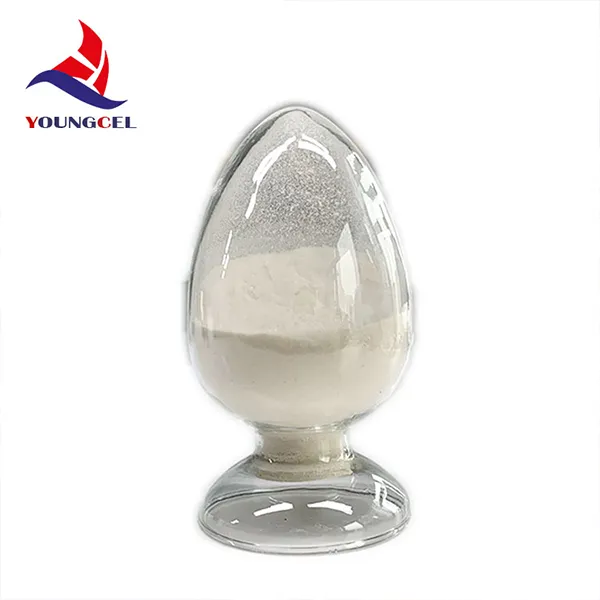The Role of Cellulose Ether in Chemical Adhesives
Cellulose ethers have gained prominence in various industries due to their versatile properties and applications, particularly in the formulation of chemical adhesives. Derived from cellulose, a natural polymer obtained from plant fibers, cellulose ethers are modified to enhance their performance in different applications, including adhesives, paints, and coatings. This article explores the significance of cellulose ether in chemical adhesives, its properties, and its applications.
Understanding Cellulose Ether
Cellulose ether is produced by chemically modifying cellulose, a linear polysaccharide composed of β-D-glucose units. The modification process typically involves the substitution of hydroxyl groups in the cellulose structure with ether functionalities such as methyl, ethyl, or hydroxypropyl groups. This modification alters the solubility, viscosity, and adhesive properties of the cellulose, making it suitable for various formulations.
One of the remarkable features of cellulose ether is its ability to dissolve in water or organic solvents, depending on the degree of substitution and the type of ether group added. This solubility plays a crucial role in formulating adhesives, allowing for easy mixing, application, and drying processes. Additionally, cellulose ethers are known for their excellent film-forming properties, contributing to the strength and durability of the final adhesive product.
Properties of Cellulose Ether in Adhesives
Cellulose ethers impart several beneficial properties to chemical adhesives, enhancing their performance and usability
1. Viscosity Control Cellulose ethers help in controlling the viscosity of adhesive formulations. Adjusting the viscosity is essential for achieving optimal application characteristics, ensuring that the adhesive flows well and evenly spreads over the surfaces.
2. Water Retention In adhesive applications, especially in construction and woodworking, cellulose ethers provide superior water retention properties. This characteristic prevents the adhesive from drying too quickly, allowing adequate time for positioning and aligning substrates before the adhesive sets.
3. Film Formation The ability of cellulose ethers to form strong, flexible films contributes to the cohesion and adhesion of the adhesive to various substrates. This film formation is critical in providing long-lasting bonds that can withstand stresses and environmental factors.
cellulose ether chemical adhesive

4. Thixotropic Behavior Many cellulose ethers exhibit thixotropic properties, which means they can change viscosity under shear stress. This feature allows adhesive formulations to remain thick in the container yet become fluid during application, facilitating ease of use.
5. Compatibility Cellulose ethers are compatible with a wide range of resins and other additives, making them versatile components in adhesive formulations. Their compatibility enhances the overall performance and stability of the adhesive products.
Applications of Cellulose Ether-Based Adhesives
The versatility of cellulose ether makes it suitable for a wide range of adhesive applications across various industries
1. Construction In the construction industry, cellulose ether-based adhesives are often used in tile adhesives, gypsum plaster, and interior finishing products. Their excellent water retention and adhesion properties are critical for ensuring long-lasting performance.
2. Woodworking In woodworking, cellulose ethers are utilized in wood glues and laminating adhesives. They provide strong bonds and enhance the durability of wooden products, making them essential in furniture and cabinetry manufacturing.
3. Coatings and Sealants Cellulose ethers are also used in coatings and sealants due to their ability to improve rheological properties, enhance adhesion, and provide a smooth finish.
4. Personal Care Products Beyond industrial applications, cellulose ethers find use in personal care products as thickeners and stabilizers in adhesives for cosmetic applications.
Conclusion
The integration of cellulose ether in chemical adhesives has revolutionized the adhesive industry, providing formulations that are not only stronger and more durable but also easier to work with. As industries continue to seek sustainable and high-performance materials, cellulose ethers, being derived from renewable resources, offer an eco-friendly alternative. Their multifunctional properties and adaptability will undoubtedly lead to further innovations in adhesive technology in the future.
-
Rdp Powder: Key Considerations for Wholesalers in the Building Materials IndustryNewsJul.08,2025
-
Key Considerations for Wholesalers: Navigating the World of Hpmc - Based ProductsNewsJul.08,2025
-
Hpmc Detergent: Key Considerations for WholesalersNewsJul.08,2025
-
Key Considerations for Wholesalers: China Hpmc For Tile Adhesive, Coating Additives, Concrete Additives, and MoreNewsJul.08,2025
-
Crucial Considerations for Wholesalers: Navigating the World of Construction MaterialsNewsJul.08,2025
-
Key Considerations for Wholesalers Sourcing Additive For Cement, Additive For Concrete, Additive For Putty from Additive Manufacturer Shijiazhuang Gaocheng District Yongfeng Cellulose Co., Ltd.NewsJul.08,2025




